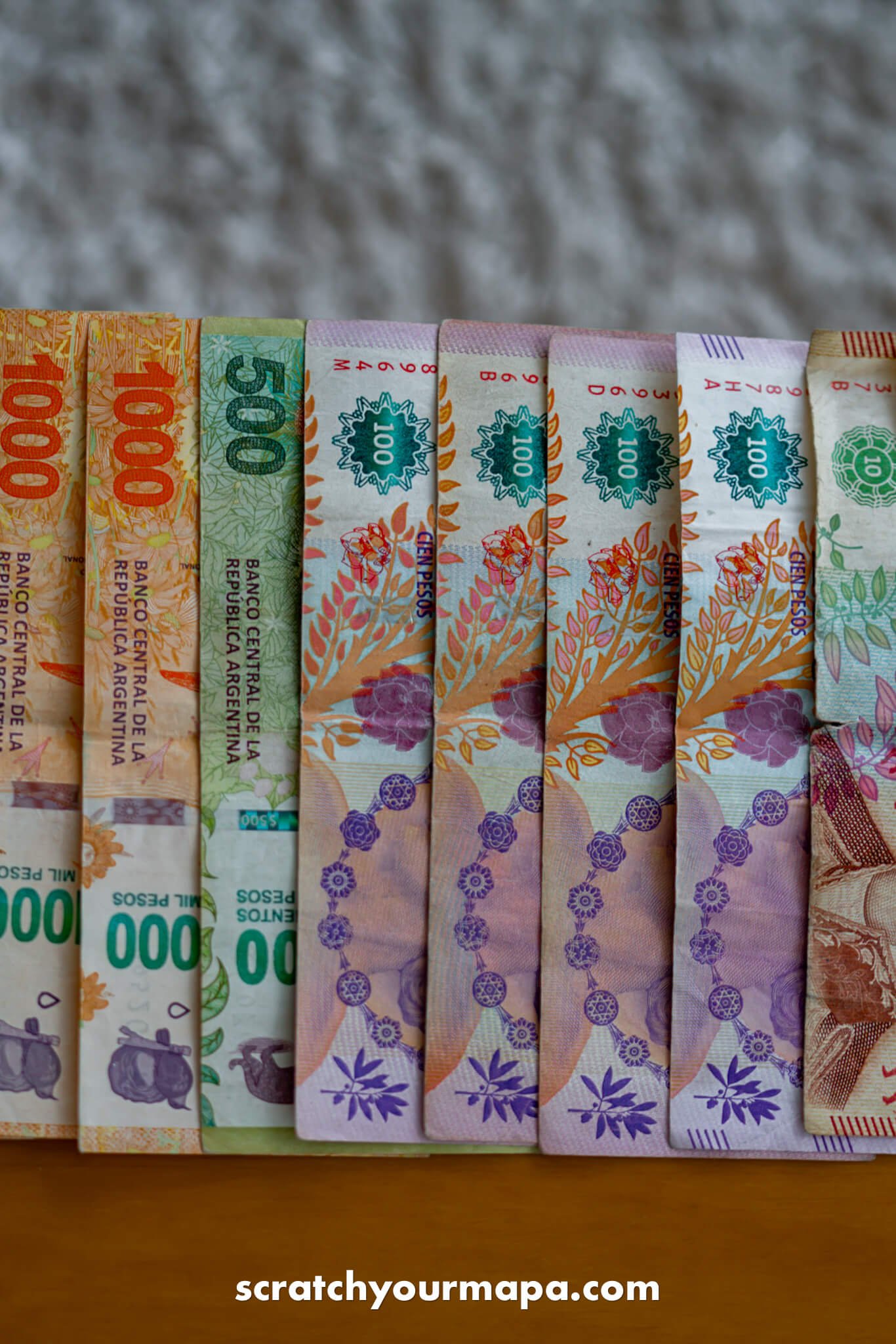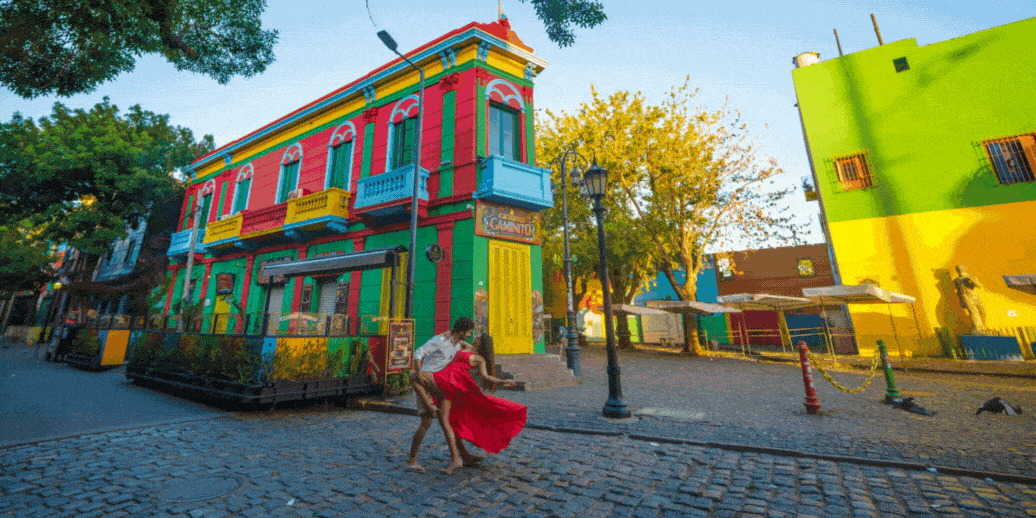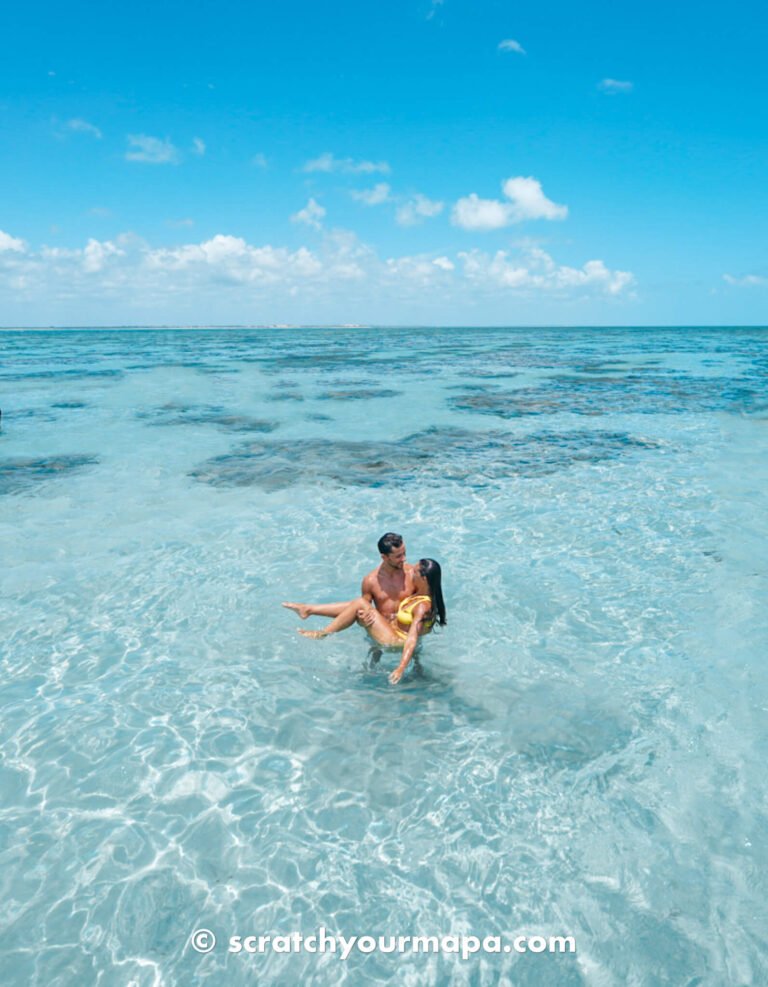What is Dollar Blue in Argentina? Understanding the Most Complex Economy in the World
The Dollar Blue in Argentina is probably one of the most important things you should learn before traveling there. A mix of bad decisions and taxes by the government has created the perfect storm for opportunity to arise. And because of it, those who understand different exchange rates get highly benefited by it, but those who don't, pay the price (literally).
In this article we'll teach you everything you need to know about the dollar blue in Argentina, written by someone who was born and raised in the country.
*Please note that this blog post may contain some affiliate links, which we make a small profit on, at zero cost to you. Links are only used on products & services that we've used and believe in, to give you the best buying experience. Purchasing from these links helps us to continue providing free travel guides for you- so thank you for your support!
Our Travel Planning Recommendations


🎫 Get Your Guide (tours)

📸 Best Buy (equipment)
🚗 Rental Cars (car rentals)




What is Dollar Blue in Argentina?
Dollar blue in Argentina is a term used to refer to dollars that are exchanged outside the banking system. Their main feature is that they work under a different exchange rate (2.5X of the official exchange rate).
The main reason for this is the amount of restrictions the government created for people to exchange under the official rate. We'll expand on this in the next section.
How To Travel Cheaper and Better in 15 minutes!
How much more would you travel, if it costed you less resources?
With our Free eBook, you will learn how to save money and time on your future trips. Plus, you'll see the exact system we use.
Grab your copy for free when you sign up for our newsletter 👇

Understanding the Dollar Blue in Argentina: The Country's Constant Inflation
So how exactly did the dollar blue in Argentina arise in the first place? The simple answer is inflation, but it definitely is more complex than just that! Here's a bit of an insight to the economic situation in Argentina.
📈 Why is Argentina's Inflation So High?
There are a lot of moving pieces in Argentina's economy that contribute to its high inflation. One that's key is the amount of money printed every year and injected into the economy.
For decades, the government has spent more money than it has collected through taxes. This is called 'fiscal deficit'. And one of the constant actions to make up for it has been to print new money. Sounds easy enough, right? You spend $10 but you earn $7, so you just print the extra $3 and you're good to go.
The problem is that printing new money makes every peso worth less. As a quick example, if there were 10 bills in the economy, each one would be worth 10% of the total, right? Now, if you injected another 10 bills in, you would have 20 bills in total, and each one would be worth 5% of the total. See how quickly things start to go south?
💵 Why is the US Dollar Worth So Much in Argentina?
As the Argentine peso loses more and more value, people look for alternatives to protect their money. One of them is to exchange them for US dollars, and to keep them under the mattress. The US dollar doesn't lose value as fast, so it's a great way to beat inflation.
The issue lies on the government needing those dollars as well. Both for financial backup of the peso, to pay international debt (Argentina owes A LOT of money to international entities), and to invest for the country's development, the US dollar remains a well-desired currency. But unfortunately, there aren't as many dollars in the central bank as the government needs.

The USD in Argentina holds a lot of value.
To prevent all the dollars being unused in people's houses, the government decided to create a BIG tax for currency exchange (somewhere around 65% extra. Read that again).
As an example, if you were to exchange 1 dollar for 350 pesos, instead you would pay a 65% tax to the government for that transaction (so an extra 227.5 pesos). AND on top of that, they limited the amount available per person to 200 US dollars PER MONTH.
All these limitations allowed the 'black market' to arise as an alternative. Why? Because you can purchase more than 200 dollars per month, and because your name isn't registered in any transaction.
🛒 How Do People in Argentina Live With Inflation?
This is the million-dollar question. In 2023, Argentina has already surpassed the threshold of 100% inflation. This means that literally prices have doubled (and sometimes even tripled) in less than 12 months. However, salaries have barely increased.
The purchasing power of people continues to go down, creating a vicious cycle between buying 'blue' dollars, getting more tax restrictions, having more money being printed, and inflation continuing to rise.
The dollar blue in Argentina is a hot topic because is the way people try to protect their money, but with some salaries as low as 400 or 500 USD per month, having savings becomes virtually impossible. Locals in Argentina continue to struggle to just survive, and traveling becomes increasingly difficult, forcing a lot of people to search for jobs outside the country.
How Does the Blue Dollar Work in Argentina?
Now that you have a better understanding of what the problem is, let's see how the dollar blue in Argentina can affect you in your travels.
The ONLY official currency in Argentina is the peso. This means that every single transaction you do should be paid for in pesos (the one exception you may find to this rule is real estate. If you're doing a temporary rental, you may find the owner asking for US dollars. But that's for another article).
A lot of stores, though, will offer you the possibility to pay with foreign currencies (particularly US dollars, Euros, and the Brazilian Real). This is totally normal and legal, but since you know the reality of the economy, you should NEVER pay with any other currency other than the peso. See, these places will present you with the 'convenience' of different currencies, but they will offer you the official exchange for that.
Don't have time to read the whole article and want to save it for later? Just pin it!



As an example, if you went to the supermarket and your bill was 3,500 pesos, with the official exchange you would be paying 10 US dollars for that same bill (official exchange is $350 for every US dollar).
But if you exchanged your US dollars for pesos using the 'blue dollar' exchange, you would be paying $3.88 US dollars for it ('blue dollar' exchange is $900 for every US dollar). See the difference?
So make sure you exchange your US dollars before starting to spend your hard-earned money in Argentina. We'll also show you a few other options, in case you need to use your credit cards or other payment methods other than cash.
Taking Advantage of the Dollar Blue in Argentina
The Dollar Blue in Argentina is actually extremely beneficial for tourists, so you can really get a lot more for your money! So we'll explain exactly how to do that, so you can take advantage of the dollar blue in Argentina.
🤑 How Do You Take Advantage of the Blue Dollar in Argentina?
The first and most important thing to do is to exchange your US dollars. For that, you will obviously have to find a house of exchange. But here's where things get a bit tricky.
Some of them will be found on the streets, with a clear chart of the exchange rate. Some others won't be visible, and these will be the ones that will have the best exchange rate (Here's where you find the dollar blue in Argentina). These places are referred to as 'cuevas' ('caves' in Spanish).
Particularly in Buenos Aires, the capital, the only way to access these places is to approach people on the street who are shouting "cambio" ("exchange" in English). You can find A LOT of people doing this in 'Florida' street, right in the heart of the city center.
Now, you may be wondering "why is this system so complicated? Why can't they just display one exchange for everyone?". Let us answer this in the next section.
👮🏼 Are Blue Dollars Legal?
The reason why you don't find the best exchange in every house of exchange is because the dollar blue in Argentina isn't technically legal.
The government knows exactly what's happening, and they try to heal the gap between the official and 'blue' exchange, but the restrictions in place make it impossible for them to regulate the streets.
No, you won't get in trouble for exchanging US dollars in any house of exchange. That's why so many people in 'Florida' street are shouting 'cambio!', and getting others to exchange in their stores. Make sure to check online the "dollar blue in Argentina" on the day that you want to exchange, and then barter a bit with the people exchanging.

Transform your photos
One click is all it takes to make your photos look stunning. Get our latest package of Lightroom presets, Into The Wild.
Exchange Rates Other Than the Dollar Blue in Argentina
We won't go very deep into this, but because certain industries in the country actually produce US dollars for the government, they get benefited with a better exchange rate for their business.
As one example, the country is a big exporter of soy beans. Because of it, any transactions for soy beans get a better exchange than the official one (but not nearly as good as the dollar blue in Argentina).

Info provided by El Cronista
How to Get Blue Dollars in Argentina: More Questions Answered
Now that you know how to get blue dollars in Argentina, here are a few more answers to some questions you may have.
✈️ Should I Bring US Cash to Argentina?
YES. If you want to get the best possible value for your money, bringing cash to Argentina is the way to go. Especially with US dollars, since it's the currency that's wanted the most.
We recommend you to do a little homework around amount of days, activities, accommodation, and transportation, so you know approximately how much money you'll need.
💰 How Many US Dollars Can I Carry to Argentina?
Depending on where in Argentina you're planning on visiting, the budget may change a bit. Keep in mind that if you run out of cash, you won't be able to withdraw US dollars anywhere in the country. Any ATM will only give you Argentine pesos, at the official exchange (so, it's a big no-no).
To have an idea of how much to bring, here are some references for you to have (average rates).
- Accommodation: 10 to 20 USD per day
- Transportation: 1 USD per day (in Buenos Aires for public transportation) or around 5 USD per day (in Buenos Aires for taxis)/ 50-100 per trip (for buses & flights to other provinces).
- Food: 5-10 USD per meal (for nice restaurants) / 2-5 USD per meal (for food from the supermarket).
- Activities: 5-100 USD per activity (in Buenos Aires) / 50-300 USD per activity (for big activities in other areas, such as Iguazu falls or Perito Moreno glacier). We suggest booking some tours online (just the unique or exclusive ones), so that you don't have to carry too much cash, or for the best availability.
💳 Can I Use My US Debit/Credit Card in Argentina?
Yes, you can. There's actually an arrangement in place between the Argentinian government and Visa. Any transactions made with a debit/credit card issued outside of Argentina by Visa receives a better rate than the official exchange.
How different is it? Well, at the moment it's around 1,100 pesos per US dollar. This is definitely helpful for those who ran out of cash, or that for any reason need to pay with a debit or credit card.
It's definitely better than the official exchange ($900 per dollar), but not as good as the dollar blue in Argentina ($1,250 per dollar).

Visa cards give a better exchange than other cards in Argentina.
🔒 Is it Safe to Carry Cash in Argentina?
It depends. Unfortunately, Argentina's biggest note is for 2,000 pesos. This means that when you exchange US dollars you will receive A LOT of notes. To give you an idea of how many, remember that 100 usd equals 90,000 pesos, when you exchange with the blue dollar rate.
If you received the highest possible notes for it (2,000-peso notes), you would be getting a minimum of 45 notes per 100 USD. However, you're most likely going to receive 1,000-peso notes, meaning you'll have a minimum of 90 notes per 100 usd.
This makes carrying cash very uncomfortable, and sometimes attention-grabbing. So make sure you have a fanny pack, purse, or something to carry the cash with you, and pay close attention. We suggest leaving the majority of your money inside your accommodation, and carrying just enough cash for each time you go out.
The Current Rate for the Dollar Blue in Argentina
Here is the most up-to-date information, as of September 12th, 2024. Keep in mind exchange rates change very quickly, and we will work hard to update this as often as possible.
🔵 What is the Blue Dollar Rate Today?
As of today, September 12th, 2024, the dollar blue in Argentina gives you 1,250 pesos per US dollar. If you use your Visa debit/credit card for any transactions in the country, you will get an exchange of 958 pesos per US dollar. Lastly, the official exchange rate is 958 pesos per US dollar.
🪙 What Can I Do With Leftover Argentine Pesos?
Overall, we don't recommend you to keep leftover money from Argentina. The reason for this is because with such a high inflation, every peso bill will halve every year. Instead, here are a few things you can do with your leftover Argentina pesos:
🤝 Exchange with Other Tourists
If you're leaving the country, look for other tourists who are arriving and offer them to exchange your pesos back to US dollars, Euros, or Brazilian Reals. This will be mutually beneficial, since they will get a better exchange rate than in other houses of exchange, and you will make sure your money doesn't lose value.
📩 Collect Bills as Souvenirs
Something we do whenever we visit a new country is to keep some bills from that country. In a world that's moving fast towards digital money, these physical bills not only will be a nice souvenir, but maybe in the future they will even be valuable as relics!

The bills are not worth a lot, so the smaller ones make great souvenirs!
🛫 Spend it at the Airport/Border
If you didn't get lucky enough to find a tourist to exchange your money with, and your leftover money is just a couple of US dollars, just spend it. As weird as it may sound, if you're not planning on going back to Argentina soon, the bills will lose so much value that they won't be worth much in the future.
Instead, maybe get a souvenir for the family, or treat yourself with a nice Argentine steak & wine. We've done it a few times, and it was a nice little treat to finish our travels.

Want To Learn How To Get Paid To Travel?
We'll teach you everything you need.
Travel Planning Tools
Here are some useful tools that you can use for planning your upcoming trip!
Argentina is a beautiful country to travel to. Unlike other areas of South America, it has a well-developed infrastructure for tourism, as well as breathtaking landscapes.
Poor economic management for decades has caused it to become extremely cheap for those who want to visit. We hope that this article served you as a guideline to make the best out of your trip to Argentina. Make sure to check out the other Argentina Travel Guides that we have, and subscribe to our newsletter for all of our most recent content!
Need help planning your trip to Argentina? We've got you covered! As locals, we specialize in creating personalized itineraries, and can help you save a ton of money and time during your trip. Simply shoot us an email, and we can chat about how to create you the most unforgettable trip for the best price possible!

Here are some other articles also worth checking out:
Like this article? Please share it with your family and friends, so that we can continue to keep creating free travel guides for you! It takes just a second, and would mean the world to us. Thanks for being here!
















